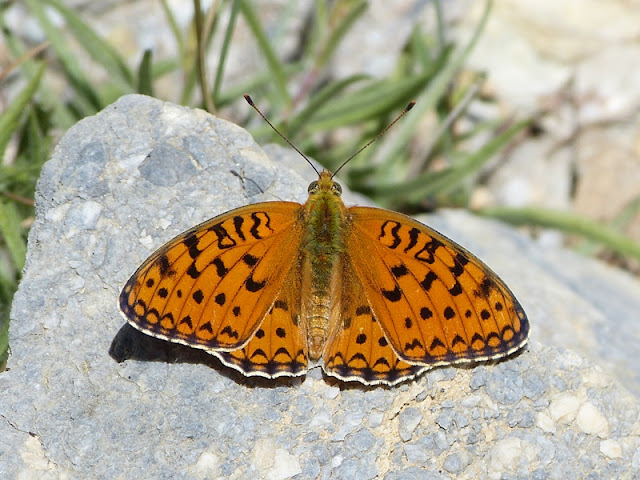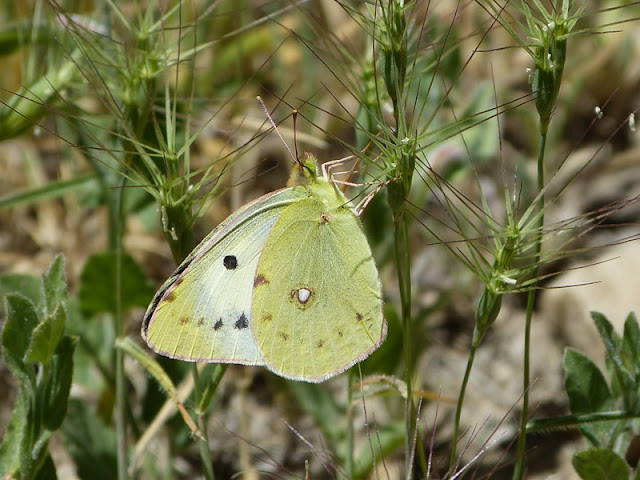On my way back down the road, I called into a viewpoint that
I have visited on previous occasions. Here, the subtly different habitat
attracts some different butterflies. Most notable are the Swallowtails, Papilio machaon hispanicus, which I
spotted almost as soon as I parked the car. They patrol this little hilltop,
presumably looking for mates.
I also saw one Spanish Swallowtail, Iphiclides feisthamelii, feeding on the same little shrub that I
have seen them on when I have visited previously.
In the past I have seen a lot of Wall Browns, Lasiommata megera, chasing
each other around. This year I only saw one or two and I didn't see any Large
Wall Browns, Lasiommata maera f. adrasta,
that I normally see here.
I saw a couple of Common Blues, Polyommatus
icarus, which I don't remember seeing in this spot before.
I spent some time watching these two Southern Marbled
Skipper, Carcharodus baeticus,
chasing around after each other and then locking horns! I have never seen
behaviour like that before.
This Safflower Skipper, Pyrgus
carthami nevadensis, was behaving a bit better!
I always see Blue-spot Hairstreaks, Satyrium spini, in this
location.
Last year when I was reviewing my photos I realised that I
had also taken a picture of a False Ilex Hairstreak, Satyrium
esculi. So, this time I was looking out for them and once again
spotted one.
There was also one Purple-shot Copper, Lycaena alciphron gordius,
here. In previous years they had been quite numerous here.
It was interesting that many of the species found in each
location that I visited in the Sierra Nevada were the same as I had seen on
other visits. There are obvious locations, habits and food plants that will
attract them. Some butterflies were in similar numbers and the same locations
as in previous years.
Others were notable by their absence or low in numbers. For
instance, it was worrying to see so few Zullich Blues and Apollos high in the
mountains. Down by the stream this year I saw no Meadow Fritillaries, whereas
two years ago I saw several. In fact there were very few butterflies there, but
in previous years I have seen hundreds of butterflies enjoying the lush
vegetation there.
Each year I visit, I see more species. This year I saw 3
species that I have never seen before and a total of 44 different species. The
Sierra Nevada is still by far the best place for butterflies that I have ever
visited.
























































